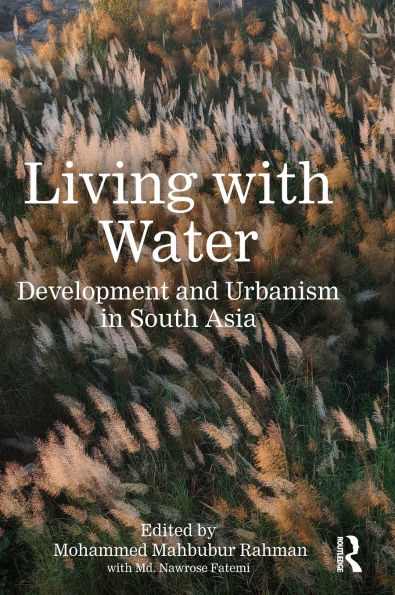Case studies drawn from Bangladesh, India, Pakistan, and Sri Lanka illustrate a range of contemporary and traditional approaches to living with water within the ecosystems, floodplains, wetlands, waterfronts, river systems, and water networks of the region. Chapters authored by architects, planners, historians, sociologists, geographers, and environmentalists combine insights into analytical methods and processes of urban planning and development, with critical attention to the importance of cultural heritage, vernacular construction, traditional water systems, and indigenous knowledge in shaping climate-resilient built and natural environments. This context supports resilient ecology and a sustainable approach to building and resource management, offering guidance in the creation of water-sensitive development, integrated urban design, wetlands restoration, and more.
Living with Water is an essential read for researchers and professionals in architecture, urban planning, water management, environmental conservation, real estate development, tourism, and local governance, and will appeal to broad range of readers interested in the history, geography, and culture of South Asia.
Case studies drawn from Bangladesh, India, Pakistan, and Sri Lanka illustrate a range of contemporary and traditional approaches to living with water within the ecosystems, floodplains, wetlands, waterfronts, river systems, and water networks of the region. Chapters authored by architects, planners, historians, sociologists, geographers, and environmentalists combine insights into analytical methods and processes of urban planning and development, with critical attention to the importance of cultural heritage, vernacular construction, traditional water systems, and indigenous knowledge in shaping climate-resilient built and natural environments. This context supports resilient ecology and a sustainable approach to building and resource management, offering guidance in the creation of water-sensitive development, integrated urban design, wetlands restoration, and more.
Living with Water is an essential read for researchers and professionals in architecture, urban planning, water management, environmental conservation, real estate development, tourism, and local governance, and will appeal to broad range of readers interested in the history, geography, and culture of South Asia.

Living with Water: Development and Urbanism in South Asia
402
Living with Water: Development and Urbanism in South Asia
402
